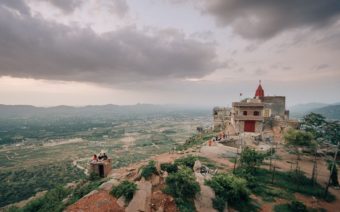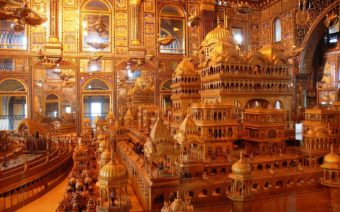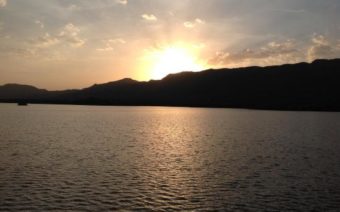Savitri Temple – Pushkar

The Savitri temple in Pushkar is located on the Ratnagiri hill which is a popular pilgrimage site for the Hindus. The temple is dedicated to Goddess Savitri. It is a very strenuous work to climb on the hilltop but it is believed that the harder you work the more ‘Tapas’ is gained. In this temple, you will find the idols of both the wives of Lord Brahma named Savitri and Gayatri. But as per tradition Goddess, Savitri is always worshipped first and then prayers to Goddess Gayatri are offered. The visitors can either trek to the temple gates or take a ride in the cable cars which take passengers to the temple. The ropeway ride is really full of fun from where you can have an awesome view of the Pushkar city. However, many devotees prefer to climb 200 stairs leading to the shrine which they consider an important part of their pilgrimage to the place. The walk up from the base takes about fifteen minutes, although you may need a few breaks it is quite a steep incline of stairs. There is also a ropeway which is carriages that take you up the mountain on a cable. I’m not sure how much it costs but unless you are afraid of a short workout and some sweat I suggest the stairs. Keep an eye out for monkeys they were quite aggressive and had me on edge, ready for battle.
The Savitri Temple in Pushkar overlooks the entire town of Pushkar and all the surrounding valleys. The temple can be spotted while at the Pushkar Lake and the beauty is, the temple is only a fifteen-minute walk from the lake. It really is the most accessible and a great way to enjoy the view over the whole of Pushkar.
- Tags :
- best budget hotel
- Best place to stay in pushkar
- best resort near pushkar lake
- dera masuda
- luxurious boutique resort in pushkar
- Pushkar
- Pushkar lake
- Savitri Temple






